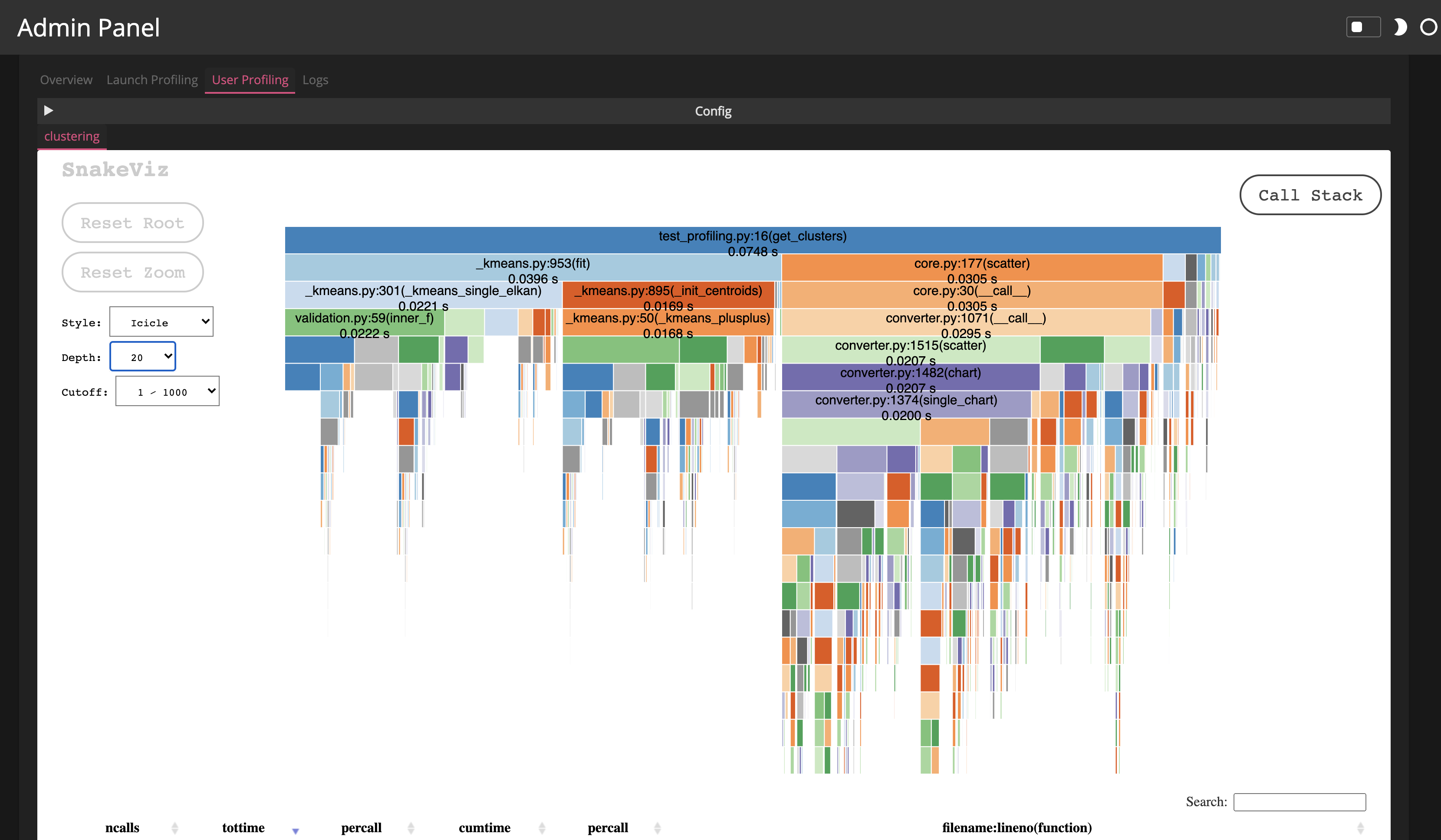Profile your Application#
This guide addresses how to enable profilers like snakeviz or memray to track down bottlenecks in your application in terms of execution time and memory usage.
Prerequisites
Read the How to > Enable the admin panel guide to be able to start profiling your application
Launch profiling#
The launch profiler profiles the execution time of the initialization of a particular application. It can be enabled by setting a profiler using the commandline --profiler option to panel serve. Available profilers include:
pyinstrument: A statistical profiler with nice visual outputsnakeviz: SnakeViz is a browser based graphical viewer for the output of Python’s cProfile module and an alternative to using the standard library pstats module.memray: memray is a memory profiler for Python. It can track memory allocations in Python code, in native extension modules, and in the Python interpreter itself.
Once enabled the launch profiler will profile each application separately and provide the profiler output generated by the selected profiling engine.

User profiling#
In addition to profiling the launch step of an application it is often also important to get insight into the interactive performance of an application. For that reason Panel also provides the pn.io.profile decorator that can be added to any callback and will report the profiling results in the /admin panel. The profile helper takes two arguments, the name to record the profiling results under and the profiling engine to use.
@pn.io.profile('clustering', engine='snakeviz')
def get_clustering(event):
# some expensive calculation
...
widget.param.watch(my_callback, 'value')

The user profiling may also be used in an interactive session, e.g. we might decorate a simple callback with the profile decorator:
import time
slider = pn.widgets.FloatSlider(name='Test')
@pn.io.profile('formatting')
def format_value(value):
time.sleep(1)
return f'Value: {value+1}'
pn.Row(slider, pn.bind(format_value, slider))
Then we can request the named profile ‘formatting’ using the pn.state.get_profile function:
pn.state.get_profile('formatting')


